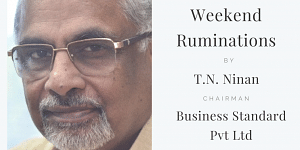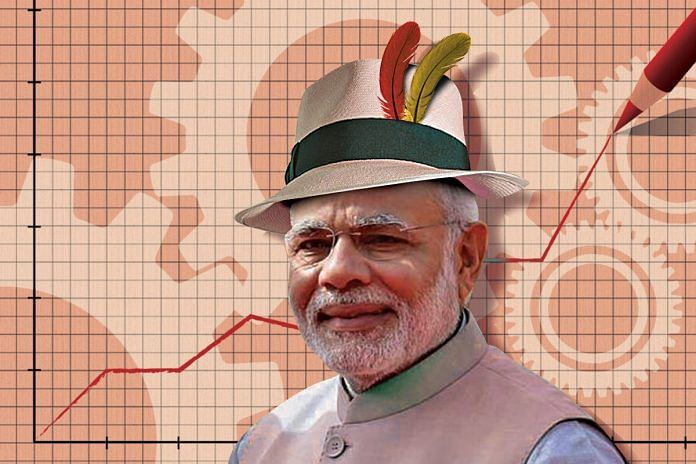Ratings aren’t the last word on anything but the sovereign rating upgrade by Moody’s is undoubtedly a shot in the arm for the Modi government.
India’s sovereign rating upgrade by Moody’s Investors Service is a second shot in the arm for the Modi government, still reeling from domestic criticism for economic bungling. The first booster shot was the sharp improvement in the country’s position in the World Bank’s Doing Business rankings. It will be the icing on the government’s cake if the July-September numbers on economic growth (due at the end of the month) show recovery from the low points of the previous two quarters. Even a mild upswing will mark a reversal from a six-quarter declining trend, and justify the relentless investor optimism that finds reflection in rising stock market indices.
Inevitably, critics will point to the limitations of such rankings and ratings; indeed, they already have. It is a fair counterpoint that these limitations were usually forgotten when the ratings were less flattering. In fact, it is arguably the case that emerging markets quite often get a rum deal in such exercises — especially since some of the ratings are dependent on polls of expatriate business executives posted in unfamiliar environments.
 The biases that are inherent in such an exercise invariably work to the detriment of the host country. For instance, India has always got a very poor rating on the time taken for getting construction permits — perhaps justifiably so. But, in a conversation not too long ago, the chief executive of an international mining giant confessed that it had taken his firm five years to get the permissions required to build a corporate office on a piece of land the company owned in Manhattan.
The biases that are inherent in such an exercise invariably work to the detriment of the host country. For instance, India has always got a very poor rating on the time taken for getting construction permits — perhaps justifiably so. But, in a conversation not too long ago, the chief executive of an international mining giant confessed that it had taken his firm five years to get the permissions required to build a corporate office on a piece of land the company owned in Manhattan.
Similarly, it is worth asking why the global competitiveness rankings announced annually by the World Economic Forum never give a top rank to the fastest-growing economies, or to those receiving the maximum foreign investment, or to those with rapidly growing exports. That should prompt the question as to what exactly is meant by competitiveness. The Forum says it measures productivity; so why not call it a productivity index? Because an index that reflects neither growth nor investment nor exports can hardly claim to be measuring competitiveness.
Emerging markets often suffer in sundry rankings because of high levels of perceived corruption. But Germany’s ranking actually improved after Volkswagen confessed to massive, organised, company-wide cheating on the level of emissions of its diesel engines. Nor has Switzerland, which has prospered for decades by providing a safe haven for money stolen from poor Third-Worlders, suffered on any corruption score. It depends of course on what you mean by corruption, and whose definition it is.
The history of Moody’s India ratings tells its own story. The ratings were at their best in the late 1980s, when the country was rated A2 (upper-medium grade, below high grade) before the signs of a foreign exchange crisis led to a downgrade in October 1990 to Baa1, then to Baa3 six months later.
This was lower-medium but still investment grade, though the Chandra Shekhar government had fallen, had been unable to present the Budget, and was therefore in no position to honour the commitments given to the International Monetary Fund for a loan that had been negotiated. It was only three months later, in June 1991, that Moody’s pushed the country below investment grade, to Ba2 — perhaps because Rajiv Gandhi had been assassinated in the middle of the elections and political uncertainty had been piled on top of a payments crisis.
On any reckoning, Moody’s was well behind the curve then, as indeed it continued to be because it did not upgrade India for another three years, when by any yardstick the economy had been rescued from crisis long before.
The point of this long ramble is that ratings are not the last word on anything — sometimes they are unfair, at other times they flatter to deceive. In general, to the extent that ratings have started showing India in a somewhat better light, one should take it as a reflection of India’s improved macro-economic standing and its incremental reforms.
By Special Arrangement with Business Standard




While mr ninan could not find a substantial reason to be critical of moody rating upgrade , he raises questions about rating companies per se and about Moodys and indicates his disapproval of the same without saying in so many words. I would have appreciated him had he been forthright if he did not agree and given his reasons. May be he could not do so as he might have raised red flags on demonetisation, gst,wondered management of economy by Modi government.